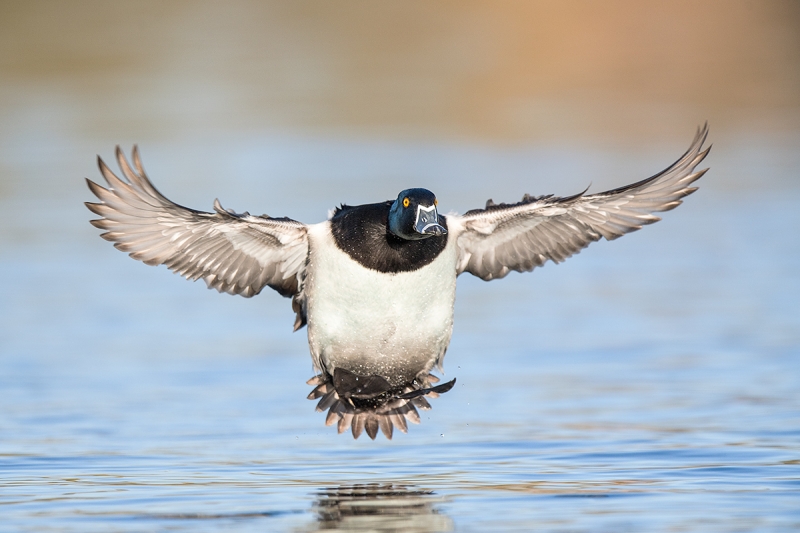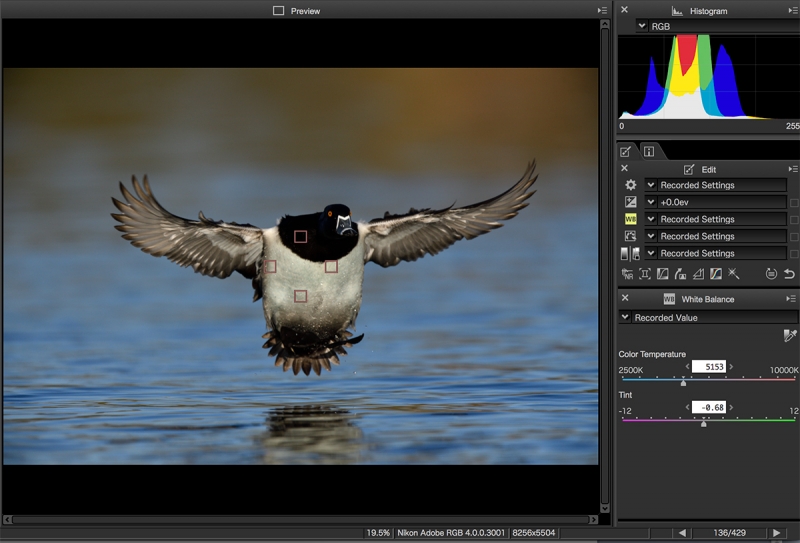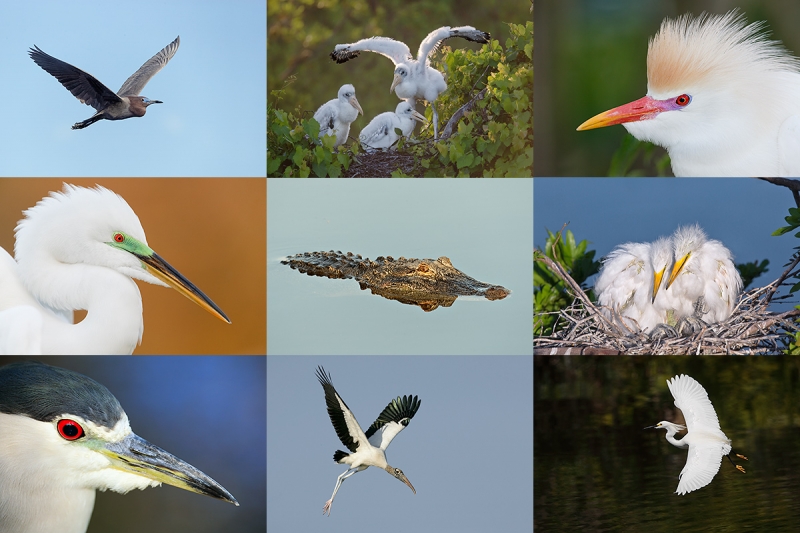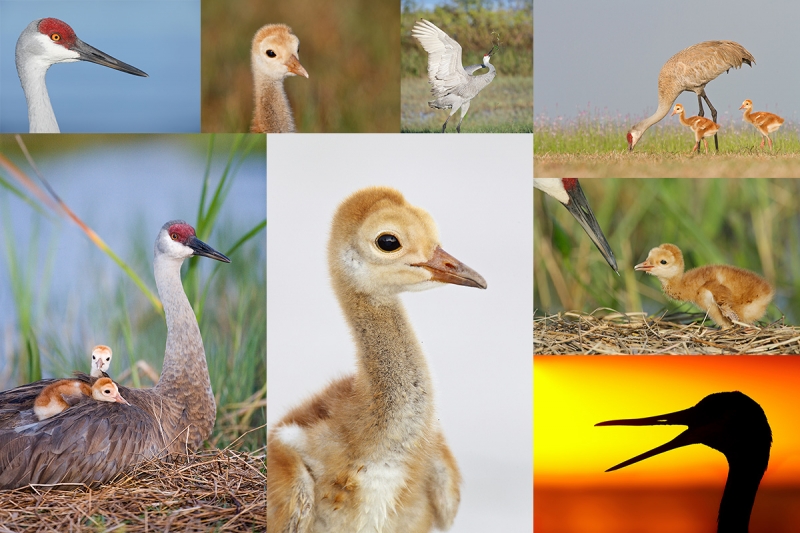Stuff
I am still taking it easy and will be for a while longer. No photography, no swimming. The shoulder is getting better bit by bit very slowly. Not anywhere near fast enough for me but at my age, I need to be patient. Range of motion of the left arm with abduction and flexion gets a few degrees better every day. After watching me move my arm today on FaceTime, Amy Novotny is confident that I will make a complete recovery. From her mouth to …
After setting up my replacement D5 today I AF fine-tuned it with the 200-500 at 500mm. Right now it looks like +6 but I will be doing an AFC test tomorrow to confirm that. In addition, I did get to work on the Nikon Focus Fine-tune Guide.
This Just In!
By lunch eastern time there was lots to learn reading the comments and my replies; you know what to do.
The Streak
Today makes two hundred twenty-nine days in a row with a new educational blog post! This one took about an hour and a half to prepare. With all of my upcoming free time (or not…), the plan right now is to try to break the current record streak of 480 … Good health and good internet connections and my continuing insanity willing.
Money Saving Reminder
If you need a hot photo item that is out of stock at B&H, would enjoy free overnight shipping, and would like a $50 discount on your first purchase, click here to order and enter the coupon code BIRDSASART at checkout. If you are looking to strike a deal on Canon or Nikon gear (including the big telephotos) or on a multiple item order, contact Steve Elkins via e-mail or on his cell at (479) 381-2592 (Eastern time) and be sure to mention your BIRDSASART coupon code and use it for your online order. Patrick Sparkman saved $350 on a recent purchase!
The Used Gear Page
Action on the Used Gear Page recently has been fantastic. You can see all current listings here.
Booking.Com
Several folks on the Spoonbill IPTs used the Booking.Com link below and got great rates and saved a handsome $25.00 in the process. If you too would like to give Booking.Com a shot, click here and to earn a $25 reward on your first booking. Thanks to the many who have already tried and used this great service.
Gear Questions and Advice
Too many folks attending BAA IPTs and dozens of folks whom I see in the field, and on BPN, are–out of ignorance–using the wrong gear especially when it comes to tripods and more especially, tripod heads… Please know that I am always glad to answer your gear questions via e-mail. Those questions might deal with systems, camera bodies, accessories, and/or lens choices and decisions.
|
|
|
This image was created at the Riparian Preserve at Gilbert Water Ranch on the afternoon of Monday March 5, 2018. I was sitting behind my Induro GIT 304L/Mongoose M3.6-mounted Nikon AF-S NIKKOR 600mm f/4E FL ED VR lens, with the Nikon AF-S Teleconverter TC-14E III, and the Nikon D850. ISO 800. Matrix metering -1/3 stops: 1/3200 sec. at f/6.3 in A (Aperture priority mode –Av in Canon). AUTO2 WB at 5:27pm. Group (grp) shutter button AF. Nikon Focus peaking AF Fine-tune: -6; see the important info below. (Please see and carefully read Nikon Focus Fine-tune Guide item below). Click on the image to see a larger version. Ring-necked Duck drake landing
|
The Basics
- 1- For most folks hand holding a lens that they can easily handle will be better for flight than a heavier, tripod-mounted super-telephoto. With large, slow birds that do not fly erratically both of the previous approaches can be successful.
- 2- Practice acquiring the subject in the frame and practice keeping the selected AF point on the bird’s face, neck, or upper breast.
You can learn tons more in Jim Neiger’s Flight Plan e-Guide and Arash Hazeghi’s Bird’s in Flight Photography Guide (Basics for Canon EOS Users). I learned a lot from both of them.
Head Soft? Feet Sharp? An AF micro-adjustment focus fine-tune tip for both Canon and Nikon flight photographers …
At times with both Nikon and Canon gear you might be 100% positive that you acquired focus early and successfully tracked the subject flying directly towards you at a good clip only to learn when checking a magnified view either on the camera’s rear LCD or when reviewing your images on a computer that the bird’s face and eyes are soft but that the feet are sharply focused. If you are desperate and if you have accurately micro-adjusted your flight photography rig, you might wish to give this a try: go into your AF fine-tune (Nikon) or AFA (Canon) settings and move the focus forward 10 or 15 units if possible or at least to the negative maximum. Both Patrick and I tried this with Canon and had a modicum of success. I tried it in Cayman Brac and in Phoenix with my Nikon gear and had a good bit of success.
When today’s featured image was created, the AF Focus peaking Fine-tune value for my 600/TC-E14/D850 combo was +4 (and it has not been changed since then). But when I checked several incoming duck images at 100% magnification on the D850’s rear LCD, I noted that many were soft on the face/sharp on the feet so I moved the focus forward ten units, from +4 to -6. I had some excellent results thereafter that included today’s featured image. Do understand that there are so many unmeasurable variables in the flight photography equation that figuring anything out definitively is difficult at best. Those include skill of the operator, the AF Area (Selection) mode, the AF settings, the light, the contrast, and the speed and direction of the bird to name a few. I did use this strategy with the Brown Boobies in flight on Cayman Brac with my D850 and had some great results. My impression however is that the Nikon D5 DSLR Camera (w/Dual XQD Slots) does a better job in similar situations than the D850 and gets the bird’s eyes sharp consistently when your subject is flying right at you. Thus, I never had to move the AF forward with the D5. But please remember that I do not have a ton of experience with the D5 at this point.
One thing that I am convinced of for now is that Nikon folks whose cameras offer Group (grp) AF should use it for flight photography 100% of the time. Or not …
At this point many may have — as I did before writing this blog post — jumped to the wrong conclusions. Keep reading …
Don’t Forget!
If you try this technique, it is absolutely imperative that you set your AFA or AF Fine-tune value back to the correct number when your flight photography session is complete. If you forget that step all of your images in the next session will be considerably front-focused …
|
|
Nikon Capture NX-D Screen Capture |
What Really Was Going On …
It would be easy to think here, “Big deal, the Nikon gear focused well behind the incoming bird, just like Canon does.” But if you study the NX-D screen capture above and note the placement of the four AF points you will see that the AF system focused where it should have, on the bird’s breast. AKA operator error. But having moved the AF point forward 10 units the image wound up more than sharp enough on the eye. As I said, there are lots of factors involved. If you are consistently making soft on the eyes/sharp on the feet images of birds flying right at you, and like me, have trouble keeping the selected AF point on the bird’s head, you might want to trying moving the Af forward at least 10 points (if possible).
Note that today’s image was significantly under-exposed.
The Nikon D850/D5 Focus Fine-tune Guide
I began work on the Nikon D850/D5 Focus Fine-tune Guide on Friday. There is lots of mis-information out there on Nikon Automatic AF Fine-tune. Working with Patrick Sparkman, we developed a way of using that feature effectively. Patrick was on a roll and perfected a method for using the Focus Peaking feature available only on the D850 to quickly and accurately micro-adjust all lenses and TC-Es with your D-850. Both Nikon Automatic AF Fine-tune and D850 Focus Peaking AF Fine-tune require a LensAlign Mark II kit so that you can obtain accurate results. I learned recently that the Nikon D500 DSLR does offer Automatic AF Fine-tune.
Folks who use one of my links to purchase a Nikon D850, a Nikon D5 DSLR Camera (Body Only, Dual XQD Slots), a Nikon D500 DSLR , or any Nikon gear totaling more than $2,000 will receive the new guide free. I hope to have it finished in two weeks but don’t hold me to it 🙂
|
|
Tame birds in breeding plumage are great fun. |
Gatorland IPT #2. Sunrise: 6:48am. Sunset: 7:58pm.
3 1/2 DAYs: THURS 26 APR through and including the morning of SUN 29 APR. $1599. Limit 5 photographers/Openings: 3.
Must purchase Gatorland Photographers Pass. Click here for details. All early entry. Late stays Thursday, Friday and Saturday. Gatorland IPT #2 should have lots of chicks, and lots of birds in breeding plumage. We will get to photograph Great Egret, Snowy Egret, Tricolored Heron, and Wood Stork. The Cattle Egrets in full breeding plumage will be present in good numbers. Learn my Gatorland strategy, to get the right exposure, flight photography techniques, my secret Gatorland spots, how to see the best situations (nobody is better at that than me), and how to make great images in extremely cluttered situations.
|
|
Early Spring Photo Opportunities at ILE |
BIRDS AS ART First-ever Master Class
Master Class. Two Full and two Half Days/Friday afternoon, March 30 through lunch on Monday, April 2, 2018: $1999.00. Limit: 4/Openings 3.
The Master Classe will be a small group — strictly limited to four photographers — with the first folks who register having the option of staying at my home ($50/night) or at a chain motel in nearby Lake Wales. Live, think, and breathe photography from Friday afternoon through lunch on Monday (late-morning); all meals included. There will be three afternoon photo sessions (FRI – SUN) hopefully with glorious sunsets like the ones you saw one the blog in December we should have good opportunities with the cranes even in the afternoon. We will enjoy three morning photography sessions (SAT – MON) with the main subjects being tame Sandhill Cranes almost surely with chicks or colts. Also vultures and Cattle Egrets and more. Limpkins are possible. Intermediate telephoto lenses are fine for the cranes, even the chicks at times. A 500 or 600mm lens would be best for many of the situations that we will encounter.
During the day we will sit together around my dining room table and pick everyone’s keepers and enjoy guided Photoshop sessions. On Monday before lunch, folks can make a single large print of their favorite image from the weekend. If you so choose, I will micro-adjust one of your lenses (at one focal length with your #1 camera body–Canon or Nikon) during a group instructional session. All will be welcome to practice what they have learned during the breaks using my set-up and my lighting gear.
To register, please first shoot me an e-mail to check on availability. Then you will be instructed to call Jim or Jen at 863-692-0906 during weekday business hours (except for Friday afternoons) to leave you non-refundable (unless the session sells out) $500 deposit. Only the deposit may be left on credit card. Balances must be paid by check immediately after you register (unless you wish to pay by credit card plus 4% to cover our fees).
I hope that you can join me on this new adventure.
with love, artie
ps: bring your bathing suit if you would like to try my pool.
Help Support the Blog
Please help support my (stupendous) efforts here on the blog by remembering to click on the logo link above each time that you shop Amazon. That would be greatly appreciated. There is no problem using your Prime account; just click on the link and log into your Prime account. With love, artie
If In Doubt …
If in doubt about using the BAA B&H affiliate link correctly, you can always start your search by clicking here. Please note that the tracking is invisible. Web orders only. Please, however, remember to shoot me your receipt via e-mail.




Please Remember to use my Affiliate Links and to Visit the New BAA Online Store 🙂
To show your appreciation for my continuing efforts here, we ask, as always, that you get in the habit of using my B&H affiliate links on the right side of the blog for all of your photo and electronics purchases. Please check the availability of all photographic accessories in the New BIRDS AS ART Online Store, especially the Mongoose M3.6 tripod head, Wimberley lens plates, Delkin flash cards and accessories, and LensCoat stuff.
As always, we sell only what I have used, have tested, and can depend on. We will not sell you junk. We know what you need to make creating great images easy and fun. And please remember that I am always glad to answer your gear questions via e-mail.
I would of course appreciate your using our B&H affiliate links for all of your major gear, video, and electronic purchases. For the photographic stuff mentioned in the paragraph above, and for everything else in the new store, we, meaning BAA, would of course greatly appreciate your business. Here is a huge thank you to the many who have been using our links on a regular basis and those who will be visiting the New BIRDS AS ART Online Store as well.
Be sure to like and follow BAA on Facebook by clicking on the logo link upper right. Tanks a stack.
Typos
In all blog posts and Bulletins, feel free to e-mail or to leave a comment regarding any typos or errors. Just be right :).


















Interesting point Artie, one thought though. When birds are flying towards you, this is the most difficult aspect for the camera to predict where the bird will be between shots, even with a super fast frame rate. The time the mirror is down between shots when the camera is effectively blind although very small is long enough for a bird flying in your direction at speed to travel a significant distance. Thus potentially out of focus pictures unless the predictive settings of the Al Servo AF characteristics (Canon not sure of Nikon equivalent) are correctly set in camera. We all know that’s not easy.
Very interesting tip. I plan to try that on my D500 for BIF. Get well soon.
Good luck and let us know how it goes.
with love, artie
I just bought Arash’s BIF book. Your online purchase process is really slick, maybe the best on the web. Since I was logged in, all the data was stuffed in the form – all I really had to do was enter my login code at PayPal. Almost too easy to buy stuff!
🙂 and thanks.
a
Very interesting tip. I’ve never thought of that. I wonder if there is a button that could be programmed to back 10 off of your micro adjustment instantly instead of having to go to the fine tune menu to back it up.
Not likely but I think that you can add it to your My Menu page … I need to figure out how to do that with my Nikon bodies …
with love, artie
You bring up some interesting points (no pun intended), namely the difficulty of maintaining the active AF areas on the birds’ faces. At times I tried using the smaller, “spot” AF points on the Canon, hoping that they would provide a greater likelihood of success and while they seemed to improve AF on static subjects, they failed miserably on BIF. The trick of advancing the MA forward and concentrating the AF on the body is a fascinating approach and one I’ll have to experiment with.
You mentioned that you adjust the MA in the field based on what you see in the magnified display on the playback. Is this tenable on the Nikon? I’ve found that the sharpened .jpg images on my Canon displays are frequently misleading and often appear to be adequately focused only to be revealed as being mis-focused when viewed later on a larger monitor.
Glad to hear that you are (slowly) getting better.
Hi Adam, Let me know if you have any success … I think that there will be times when front focusing might help even when you get the selected AF point right on the bird’s face or head and seem to be tracking successfully …
I do not have the greatest eyesight but I do wear my reading glasses on a string in the field. Nikon has a neat feature where you assign the center button of the main control on the back to magnify to 100% with one click. When I scroll around it is not too difficult to see where the image is focused. I only do that with flight photograph situations where the birds are flying right at me …
with love, artie
Adam: I have found that I get the best results for birds in flight using the center AF point and spot AF, if they are against a busy background. This with a Canon 7DII and Canon 100-400II. Against the sky I do better with center AF point and expansion.
Artie: Superb image. The wings look too small to support that fat body, like a flightless Falklands Island steamer duck! Fascinating tip you gave us today, really innovative and thoughtful idea. Thank you.
You are most welcome.
with love, artie